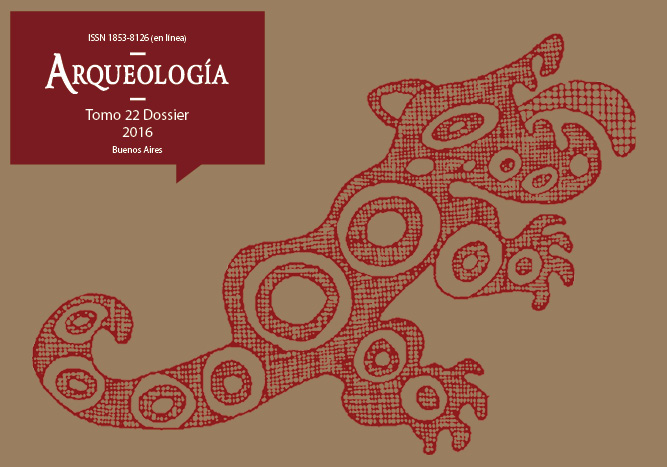Archaeofaunal studies of remains recovered from the Laguna del Telégrafo site (north coast of Santa Cruz)
Keywords:
Bone remains, Malacological remains, Shell midden, North coast of Santa Cruz
Abstract
In this paper we present the results of archaeofaunal remains analysis from both vertebrates and invertebrates, recovered from the Laguna del Telégrafo site, located in the Cabo Blanco archaeological area (North coast of Santa Cruz, Argentine Patagonia). This site is situated on the edge of an ancient tidal plain, which exists today as a seasonal lagoon. The site is a small shell midden dating to c. 2300 BP. A 2 m2 test-pit was excavated revealing a dense subsurface lens of shells from which a great quantity of faunal (bone and malacological), lithic and anthracological remains were recovered, including a leather knot. Here we analyze and discuss the possible function of the site as well as the formational characteristics of the archaeological deposit.Downloads
Download data is not yet available.
How to Cite
Zubimendi, M. Ángel, Hammond, H., & Bogan, S. (1). Archaeofaunal studies of remains recovered from the Laguna del Telégrafo site (north coast of Santa Cruz). Arqueología, 22(3), 191-209. https://doi.org/10.34096/arqueologia.t22.n0.3283
Section
Articles
Authors who publish in this journal agree to the following conditions:
- Authors retain copyright and yield to the journal right of first publication with the work registered with attribution license Creative Commons, which allows third parties to use the published always mentioning the authorship of the work and first publication in this magazine.
- Authors can make other independent and additional contractual arrangements for the non-exclusive distribution of the version of the article published in this issue (p. Eg., Inclusion in an institutional repository or publish it in a book), provided that clearly indicate that the work was published for the first time in this magazine.
- It allows and encourages the author / s to publish their work online (eg institutional or personal pages) before and during the process of revision and publication, as it can lead to productive exchanges and greater and more rapid dissemination of work published (See The Effect of Open Access).





(1)13.png)






1.jpg)
1.jpg)


13.png)
1.png)


(1)1.png)









